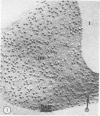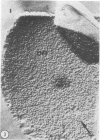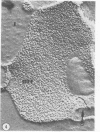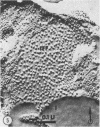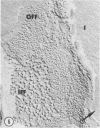Abstract
Freeze-fracture electron microscopy reveals a decreased particle concentration on the inner fracture face of acclimated thylakoids, suggestive of some alteration(s) in the hydrophobic region. Sonic oscillation causes a reversal of the altered particle concentration in acclimated thylakoids and suggests that increases in unsaturation of fatty acids can, at most, account for only part of the altered particle concentration. The particles on the inner fracture face of acclimated thylakoids are of one size group (± 140 Å) as compared to two size groups (± 100 Å and ± 165 Å) for nonacclimated thylakoids. The paracrystalline array might be associated with the acclimated state of thylakoids. Nonacclimated thylakoids require 50 mm sucrose for maximum protection of light-dependent proton uptake, while acclimated thylakoids require 25 mm sucrose, and the protection afforded acclimated thylakoids during a freeze-thaw cycle is greater. Sucrose is required for alterations in acclimated thylakoids to be manifested. Apparently increased hardiness is not only associated with changes in cellular environment but also alterations in membranes.
Full text
PDF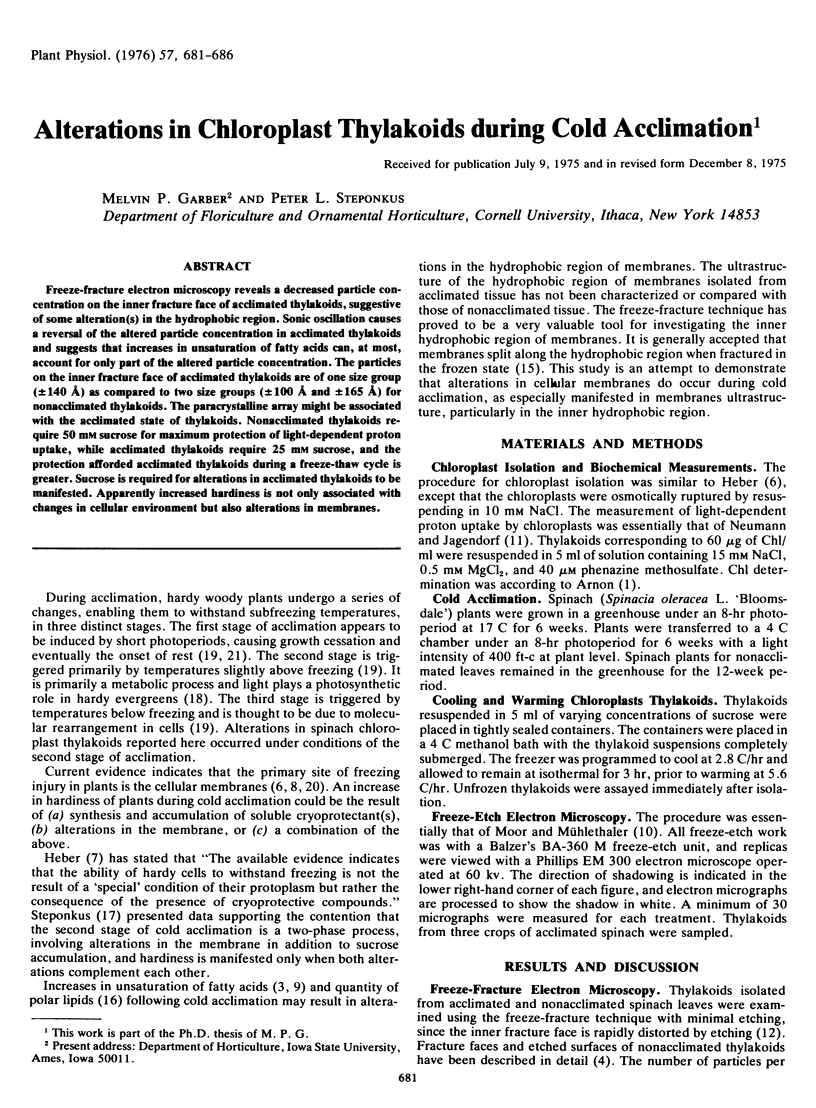
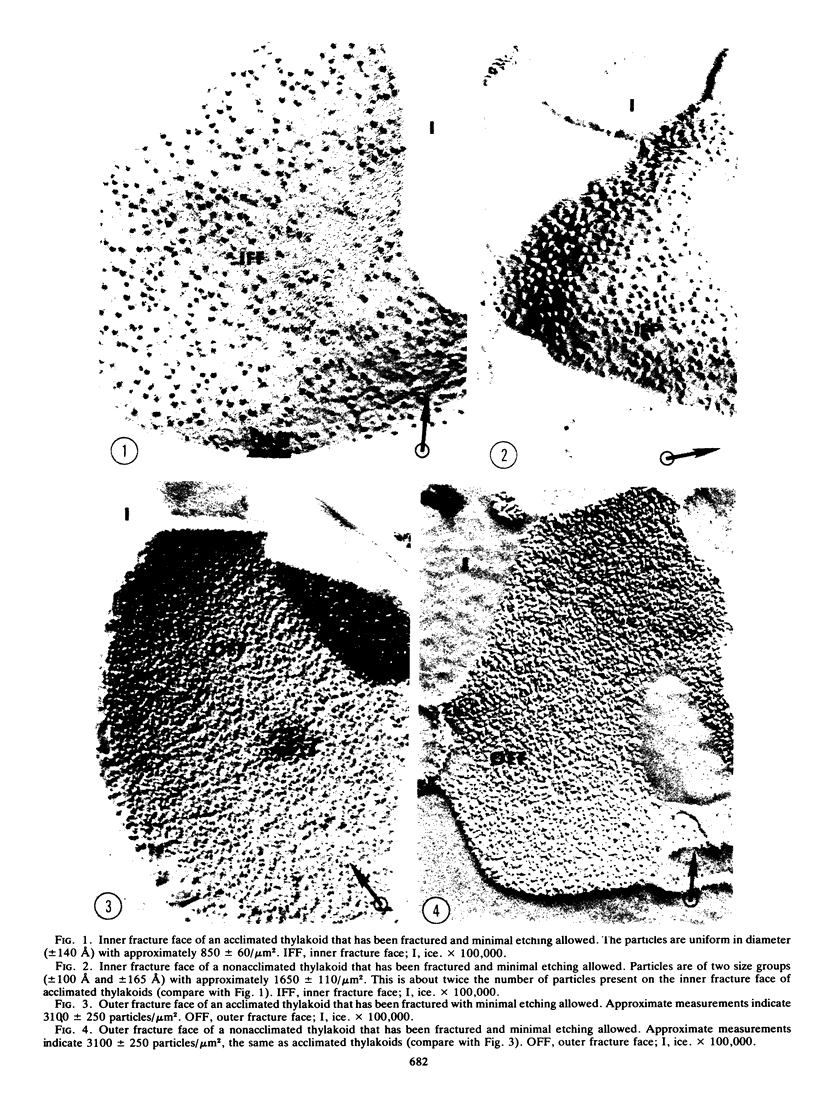
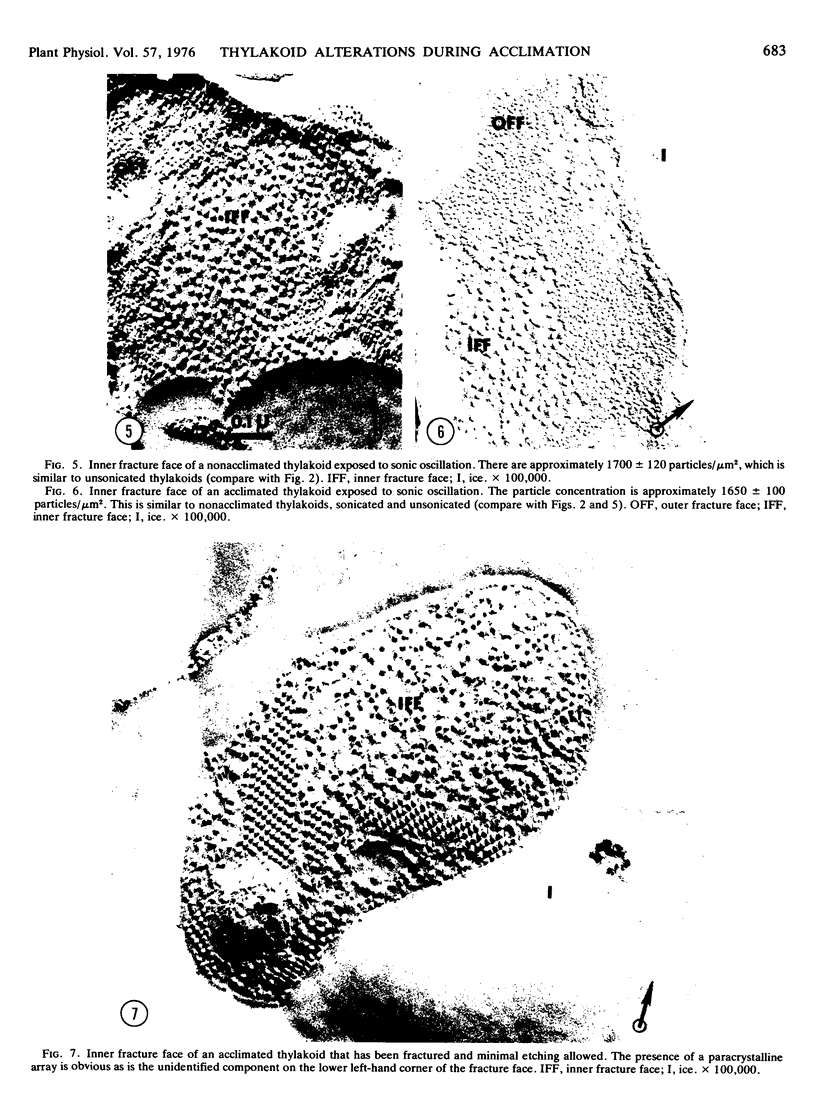
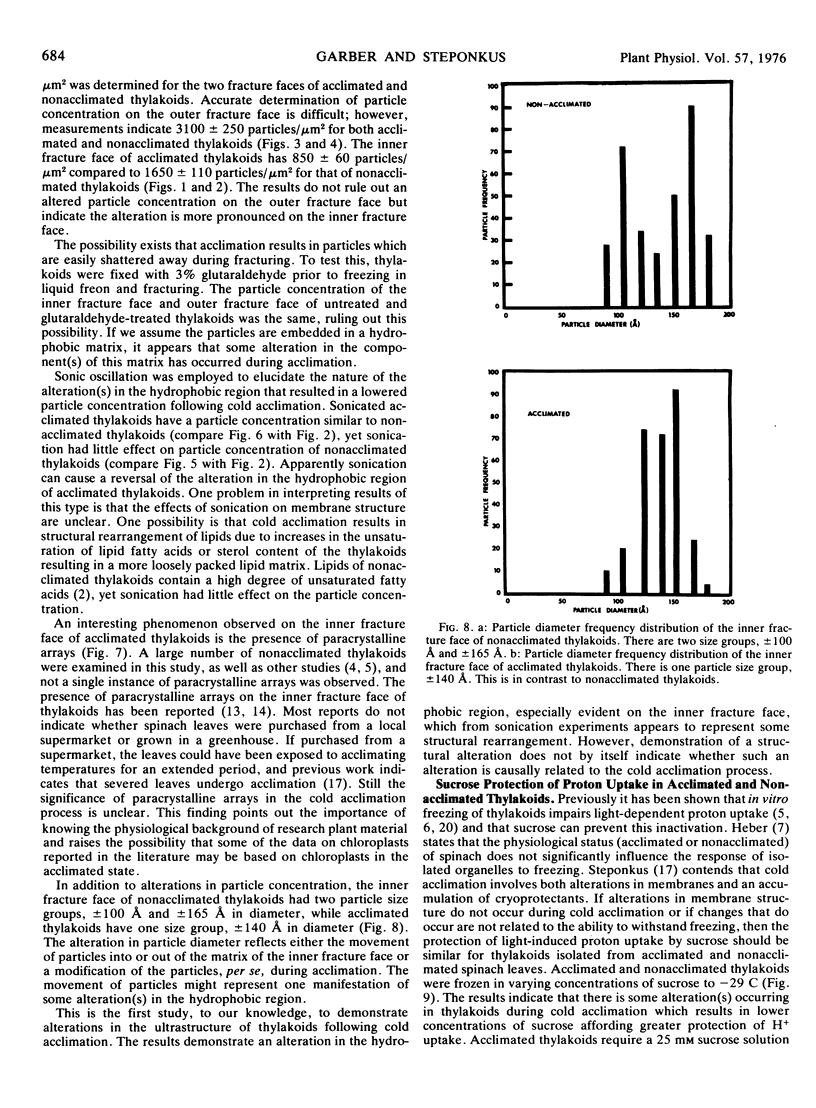
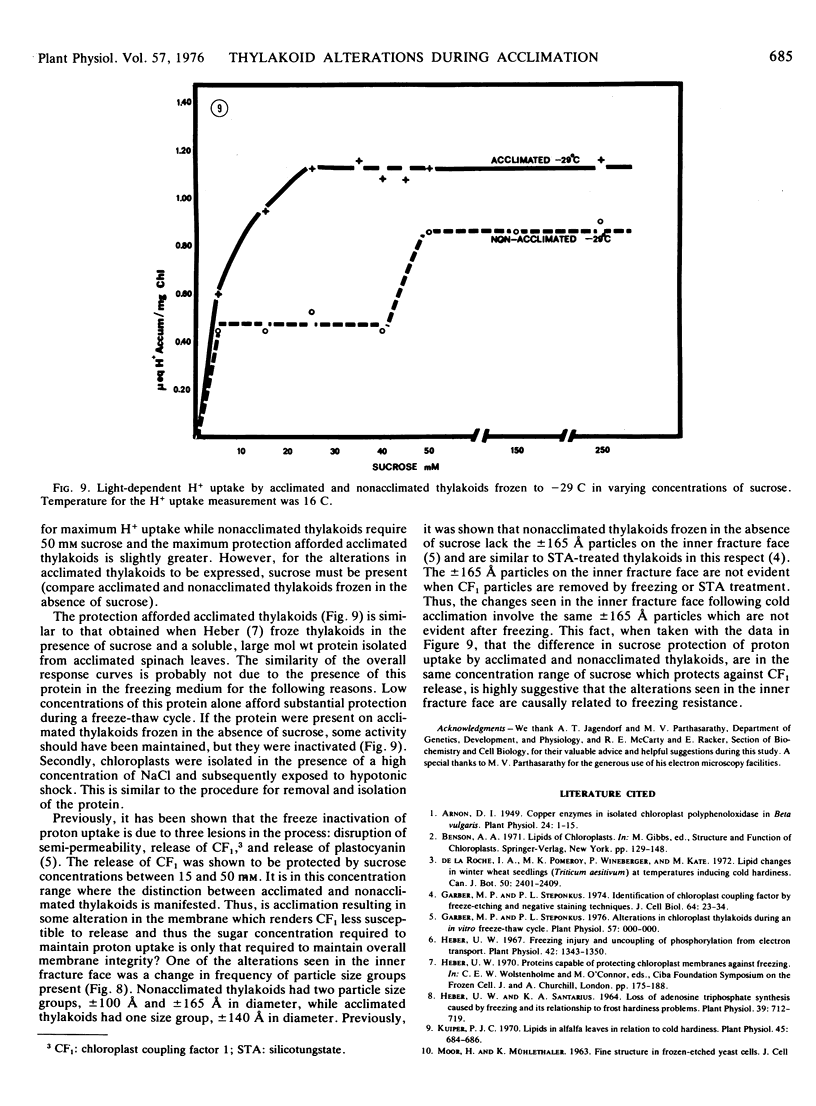
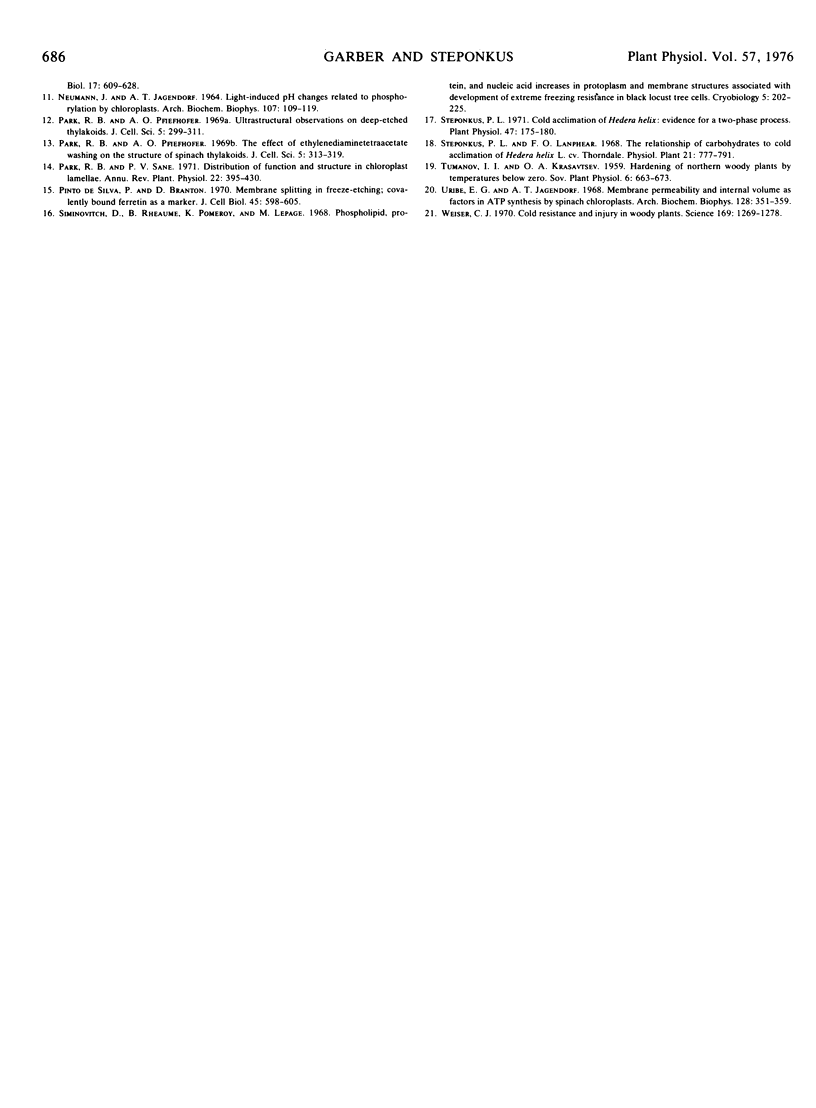
Images in this article
Selected References
These references are in PubMed. This may not be the complete list of references from this article.
- Arnon D. I. COPPER ENZYMES IN ISOLATED CHLOROPLASTS. POLYPHENOLOXIDASE IN BETA VULGARIS. Plant Physiol. 1949 Jan;24(1):1–15. doi: 10.1104/pp.24.1.1. [DOI] [PMC free article] [PubMed] [Google Scholar]
- Garber M. P., Steponkus P. L. Identification of chloroplast coupling factor by freeze-etching and negative-staining techniques. J Cell Biol. 1974 Oct;63(1):24–34. doi: 10.1083/jcb.63.1.24. [DOI] [PMC free article] [PubMed] [Google Scholar]
- Heber U. W., Santarius K. A. Loss of Adenosine Triphosphate Synthesis Caused by Freezing and Its Relationship to Frost Hardiness Problems. Plant Physiol. 1964 Sep;39(5):712–719. doi: 10.1104/pp.39.5.712. [DOI] [PMC free article] [PubMed] [Google Scholar]
- Heber U. Freezing injury and uncoupling of phosphorylation from electron transport in chloroplasts. Plant Physiol. 1967 Oct;42(10):1343–1350. doi: 10.1104/pp.42.10.1343. [DOI] [PMC free article] [PubMed] [Google Scholar]
- NEUMANN J., JAGENDORF A. T. LIGHT-INDUCED PH CHANGES RELATED PHOSPHORYLATION BY CHLOROPLASTS. Arch Biochem Biophys. 1964 Jul;107:109–119. doi: 10.1016/0003-9861(64)90276-0. [DOI] [PubMed] [Google Scholar]
- Park R. B., Pfeifhofer A. O. The effect of ethylenediaminetetra-acetate washing on the structure of spinach thylakoids. J Cell Sci. 1969 Jul;5(1):313–319. doi: 10.1242/jcs.5.1.313. [DOI] [PubMed] [Google Scholar]
- Park R. B., Pfeifhofer A. O. Ultrastructural observations on deep-etched thylakoids. J Cell Sci. 1969 Jul;5(1):299–311. doi: 10.1242/jcs.5.1.299. [DOI] [PubMed] [Google Scholar]
- Pinto da Silva P., Branton D. Membrane splitting in freeze-ethching. Covalently bound ferritin as a membrane marker. J Cell Biol. 1970 Jun;45(3):598–605. doi: 10.1083/jcb.45.3.598. [DOI] [PMC free article] [PubMed] [Google Scholar]
- Steponkus P. L. Cold Acclimation of Hedera helix: Evidence for a Two Phase Process. Plant Physiol. 1971 Feb;47(2):175–180. doi: 10.1104/pp.47.2.175. [DOI] [PMC free article] [PubMed] [Google Scholar]
- Uribe E. G., Jagendorf A. T. Membrane permeability and internal volume as factors in ATP synthesis by spinach chloroplasts. Arch Biochem Biophys. 1968 Nov;128(2):351–359. doi: 10.1016/0003-9861(68)90041-6. [DOI] [PubMed] [Google Scholar]
- Weiser C. J. Cold Resistance and Injury in Woody Plants: Knowledge of hardy plant adaptations to freezing stress may help us to reduce winter damage. Science. 1970 Sep 25;169(3952):1269–1278. doi: 10.1126/science.169.3952.1269. [DOI] [PubMed] [Google Scholar]



